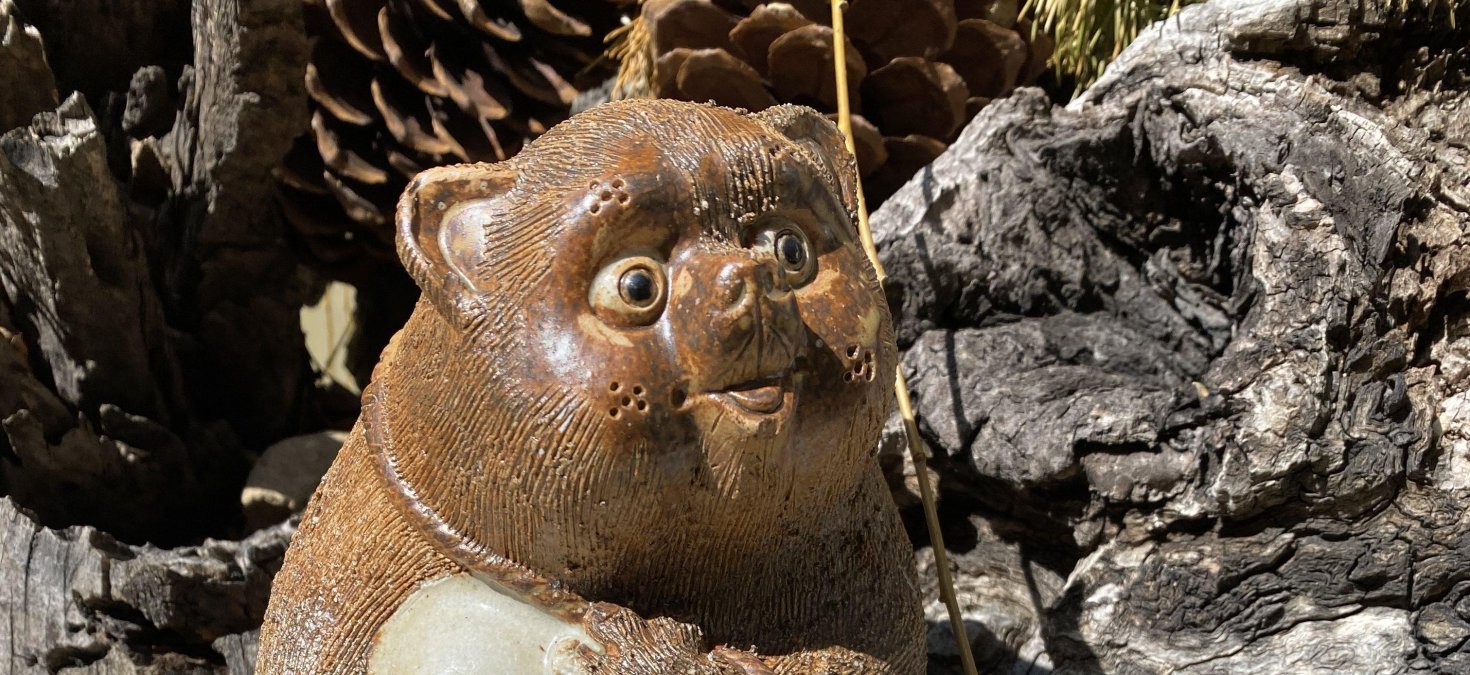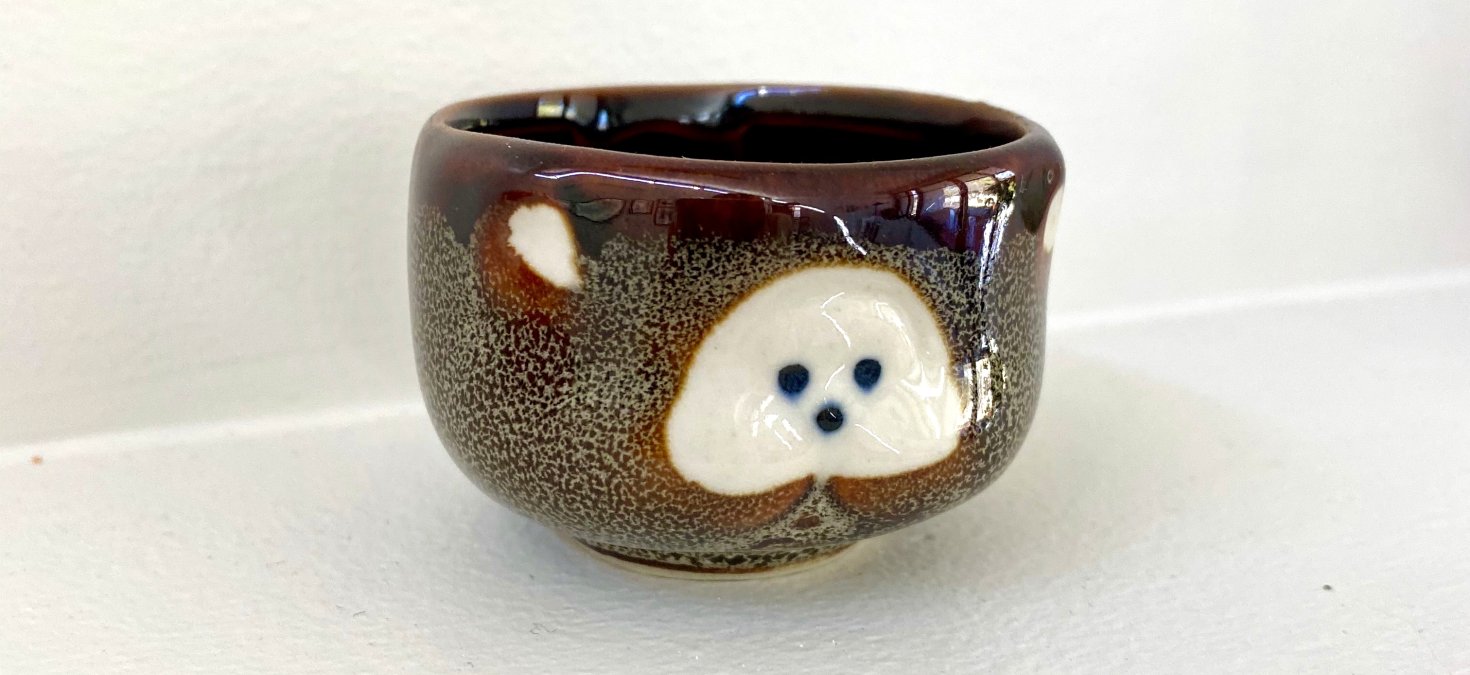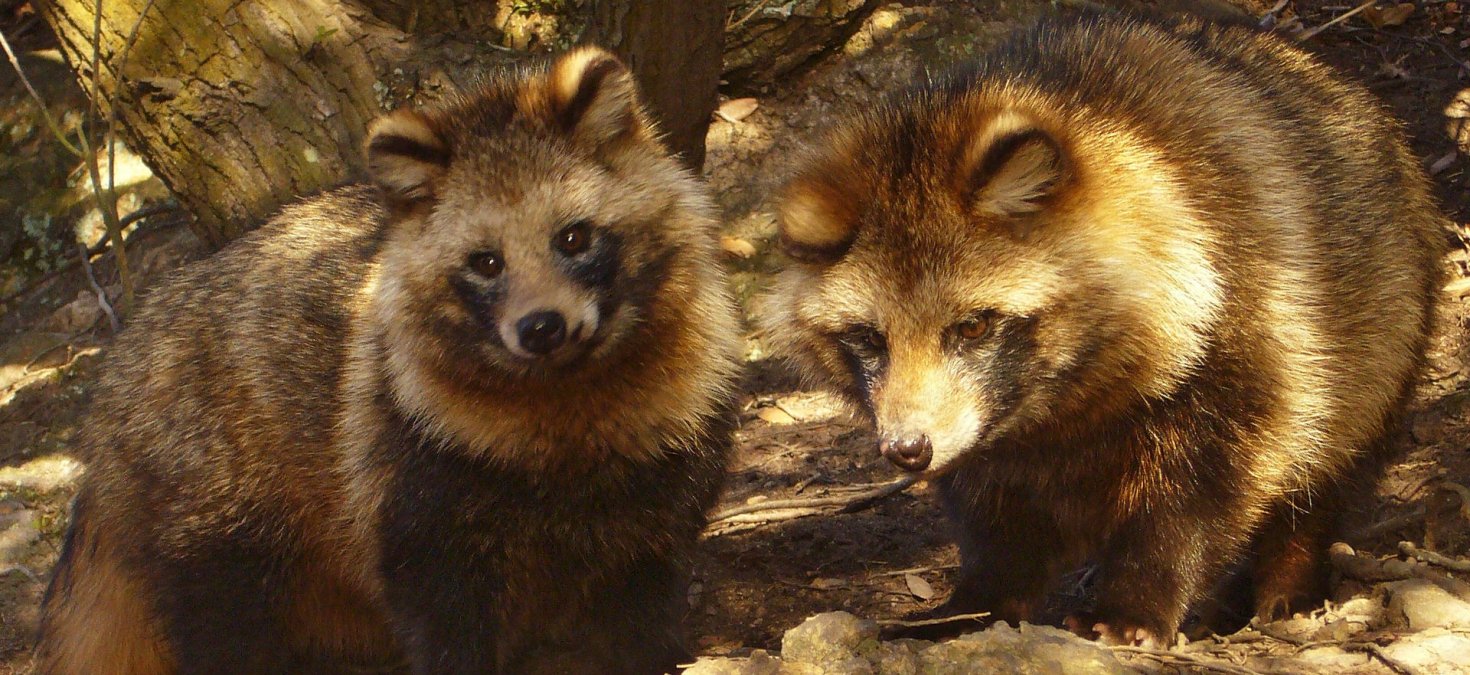The Trickster Animal Spirit: Tanuki

By Trevor Graham, UIUC Junior in East Asian Languages and Culture
In Japanese folklore, there are certain animals that possess supernatural or spiritual powers that are believed to influence the affairs of humans. These creatures are considered to be a type of yōkai (referred to in an earlier Kokoro Insights) called Henge, or shapeshifters. Among these animals, the most famous are the trickster animal spirits of the Kitsune (fox) and the Tanuki (Japanese raccoon dog). According to Japanese legends, these are the only two animals that naturally occur with magical powers. In many legends, the Tanuki and the Kitsune change shape into a human to commit mischievous acts against humans simply because they enjoy tricking humans in any way they can. While the Kitsune is associated with sharper intelligence and either a dignified or malicious intent behind its usual trickery, especially because of its association with the Shinto god Inari, Tanuki are often described as unclever and humorous in its trickery. In Shinto legends, the foxes serve as sorts of messengers or familiars of the God Inari, who is the god of rice said to protect the rice harvest and a god said to watch over the prosperity of farmers and merchants. Because the fox is said to have supernatural powers, the fox is also said to hold the ability to either ward off or allow demonic and evil influences on Inari and thus on the harvest of rice (rice also being associated with fertility in Japan). Thus, the fox spirit has become associated with either being benevolent or malicious in its use of powers. On the other hand, because of the association of the Tanuki with many humorous stories and probably simply because they are such cute animals in reality, the Tanuki is a popular animal in stories across Japan and is popularly often kept as a statue or stuffed animal in Japanese households.

A tanuki sake cup!
The tanuki, sometimes called the bakedanuki (化け狸) when referring to its supernatural abilities, contains the ability to shapeshift into just about anything. In old Japanese stories, the tanuki represented the haunting of people and was often associated with bad omens. Gradually, the tanuki became associated with a mischievous intent in using supernatural powers, as in many stories the animal would transform to play its “belly drum” to scare and almost play with unsuspected hunters, travelers, and monks. This change in mood towards the tanuki probably comes from the tanuki’s actual habitat being deep in the woods, and thus unsuspecting travelers' stories of mysterious sounds and experiences came to be blamed on the trickster tanuki. Gradually, the tanuki even began to be associated with benevolence, prosperity and fun, as the tanuki became associated in stories with transforming into humans to drink, party, and have fun alongside them. The tanuki is even a popular mascot in Japan, as having statues or drawings of tanuki outside bars and restaurants invites people to come in and just indulge in spending money and having a good time just like a tanuki spirit.
I think it would be interesting if the association of the tanuki with being a trickster may even come from how the tanuki is identified in real life. The tanuki is often misidentified as a raccoon or a badger, but is in fact actually a type of dog that looks like a racoon (hence, it is often called a raccoon-dog in English). Because it was so difficult to even explain what a tanuki really was, the tanuki became associated with legends of trickery and deception. Either way, the tanuki’s unique existence in East Asia has quite possibly contributed to its symbolization as a mystical creature.
In modern Japan, tanuki have moved into urban cities and will often steal food left out for cats and pillage garbage for food (funny as it is, much like a raccoon!). Because tanuki live so close by with humans, they have become widely known around Japan, which may be why they have come to be associated so closely with fun and merry-making rather than trickery.

Tanuki in Higashiyama Zoo (photo courtesy of Wikipedia)